I am trying to work on local explainability using Lime graph. Before building the model, I encode some of the categorical variables.
Sample Data and code:
import pandas as pd
import numpy as np
import matplotlib.pyplot as plt
from sklearn.model_selection import train_test_split
from sklearn.preprocessing import StandardScaler
from sklearn.linear_model import LogisticRegression
from sklearn.metrics import confusion_matrix
df = pd.DataFrame({'customer_id' : np.arange(1,21),
'gender' : np.random.choice(['male','female'], 20),
'age' : np.random.randint(19,50, 20),
'salary' : np.random.randint(20000,95000, 20),
'purchased' : np.random.choice([0,1], 20, p = [.8,.2])})
Preprocessing:
df['gender'] = df['gender'].map({'female' : 0, 'male' : 1})
df['age'] = df['age'].map(lambda x : 'young' if x<=35 else 'middle aged')
df['age'] = df['age'].map({'young' : 0, 'middle aged' : 1})
bins = [0, df['salary'].quantile(q=.33),df['salary'].quantile(q=.66),df['salary'].quantile(q=1)+1]
labels = ['low salary', 'medium salary', 'high salary']
df['salary'] = pd.cut(df['salary'], bins = bins, labels=labels)
from sklearn import preprocessing
l_encoder={}
label_encoder = preprocessing.LabelEncoder()
df['salary']= label_encoder.fit_transform(df['salary'])
df
customer_id gender age salary purchased
0 1 0 0 1 0
1 2 0 0 0 0
2 3 0 1 2 0
3 4 1 0 0 0
4 5 1 1 2 0
5 6 0 1 1 0
6 7 1 0 2 0
7 8 1 1 0 0
8 9 1 1 1 0
9 10 1 0 0 0
10 11 0 1 0 0
11 12 0 0 1 0
12 13 1 1 1 0
13 14 1 1 1 0
14 15 1 1 2 1
15 16 1 1 0 0
16 17 1 1 1 0
17 18 0 0 0 0
18 19 0 0 2 0
19 20 0 0 2 0
# input
x = df.iloc[:, :-1]
# output
y = df.iloc[:, 4]
from sklearn.model_selection import train_test_split
X_train, X_test, y_train, y_test = train_test_split(x, y, test_size = 0.20, random_state = 0)
Separating the customer_id column:
X_train_cust = X_train.pop('customer_id')
X_test_cust = X_test.pop('customer_id')
Fitting a logistic regression model:
from sklearn.linear_model import LogisticRegression
classifier = LogisticRegression(random_state = 0)
classifier.fit(X_train, y_train)
Building a lime chart:
import lime
import lime.lime_tabular
explainer = lime.lime_tabular.LimeTabularExplainer(np.array(X_train),
feature_names=X_train.columns,
verbose=True, mode = 'classification')
exp = explainer.explain_instance(X_test.iloc[0], classifier.predict_proba)
exp.as_pyplot_figure()
The lime chart displays the encoded features/columns values. But I need the original value. For example, if the lime chart says 0, I need to display it as female.
Could someone please let me know how fix it.

